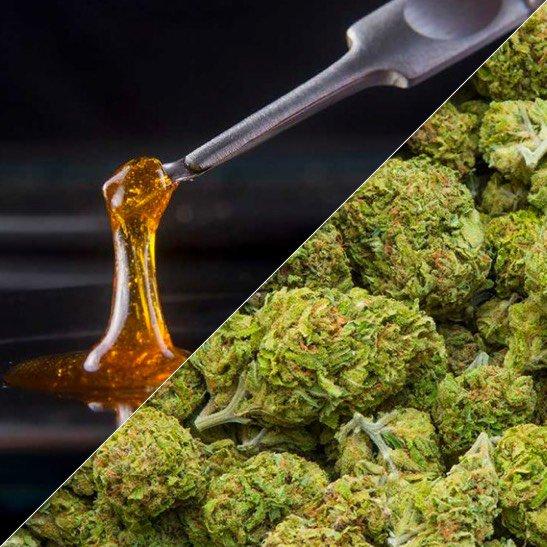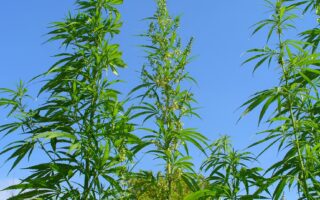Unlocking the Green Puzzle: Cannabinoids vs. THC
In the ever-evolving landscape of cannabis research, two terms frequently emerge in the conversation: cannabinoids and THC. For many, THC—short for tetrahydrocannabinol—is the well-known face of cannabis, often associated with the plant’s psychoactive effects and its role in the quest for recreational and medicinal relief. However, the world of cannabinoids is far more intricate and expansive, encompassing a diverse array of compounds that interact with the body in unique ways. This article delves into the fascinating realm of cannabinoids, highlighting the distinctions and connections between THC and its many counterparts. As we navigate this green puzzle, we aim to shed light on the complex chemistry behind cannabis, offering insights for both seasoned enthusiasts and curious newcomers alike. Join us as we explore the nuances of these powerful compounds and their implications for health, wellness, and beyond.
Table of Contents
- Understanding the Distinct Roles of Cannabinoids and THC
- Exploring the Therapeutic Benefits of Various Cannabinoids
- Navigating the Legal Landscape: THC and Cannabinoid Regulations
- Practical Tips for Choosing the Right Cannabinoid Product for Your Needs
- Q&A
- To Conclude
Understanding the Distinct Roles of Cannabinoids and THC
Cannabinoids and THC each play unique roles within the world of cannabis, contributing to its diverse effects on both the body and mind. Cannabinoids are a broad class of compounds produced by the cannabis plant, interacting with the body’s endocannabinoid system (ECS) to regulate various physiological processes. They encompass both natural compounds found in cannabis and synthetic analogs. Common cannabinoids include:
- CBD (Cannabidiol) – Known for its therapeutic properties without the euphoric high.
- CBC (Cannabichromene) – Believed to promote anti-inflammatory effects.
- CBG (Cannabigerol) – Often explored for its neuroprotective benefits.
On the other hand, THC (Tetrahydrocannabinol) is the most well-known cannabinoid and is primarily responsible for the psychoactive effects that users commonly associate with marijuana. It binds directly to the CB1 receptors in the brain, leading to sensations of euphoria and relaxation. However, THC also boasts a range of medicinal benefits, including:
| Benefit | Description |
|---|---|
| Pain Relief | Effective in alleviating chronic pain and inflammation. |
| Appetite Stimulation | Commonly helps those with eating disorders or undergoing treatments. |
| Sleep Aid | Promotes relaxation and helps with insomnia. |
Exploring the Therapeutic Benefits of Various Cannabinoids
Cannabinoids, the active compounds found in cannabis, have garnered significant attention for their potential therapeutic properties. While many are familiar with THC (tetrahydrocannabinol), the psychoactive component that induces a “high,” a diverse array of cannabinoids exist, each with unique effects. For instance, CBD (cannabidiol) is celebrated for its potential to alleviate anxiety and inflammation without the intoxicating effects associated with THC. Other cannabinoids, such as CBG (cannabigerol) and CBN (cannabinol), are emerging in research for their promising benefits, including neuroprotective properties and potential use as sleep aids.
The interaction of cannabinoids with the body’s endocannabinoid system (ECS) is pivotal in understanding their effects. This complex network plays a crucial role in regulating various physiological processes, including mood, appetite, and pain perception. Here’s a quick summary of some notable cannabinoids and their potential therapeutic benefits:
| Cannabinoid | Potential Benefits |
|---|---|
| THC | Pain relief, appetite stimulation, euphoria |
| CBD | Anxiety reduction, anti-inflammatory, seizure control |
| CBG | Neuroprotection, antibacterial, anti-inflammatory |
| CBN | Sleep aid, anti-inflammatory, potential neuroprotective |
The synergistic effects of cannabinoids, often referred to as the “entourage effect,” suggest that whole-plant extracts may be more effective than isolated compounds. This phenomenon highlights the importance of considering cannabinoid profiles in both clinical applications and recreational use, as the balance and combination of cannabinoids can significantly influence their therapeutic efficacy. By navigating the landscape of cannabinoids versus THC, consumers and healthcare professionals alike can explore a more nuanced approach to cannabis therapy.
Navigating the Legal Landscape: THC and Cannabinoid Regulations
The legal status of THC and other cannabinoids varies significantly across different regions, creating a complex tapestry of regulations that both consumers and businesses must navigate. In many places, tetrahydrocannabinol (THC), the psychoactive component of cannabis, is either heavily restricted or completely prohibited, while other cannabinoids such as CBD (cannabidiol) enjoy a more lenient stance. This divergence poses challenges for companies looking to innovate within the cannabinoid space, leading to a need for strict compliance with state and federal laws. Key considerations include:
- Licensing Requirements: Different states require varying licenses for cultivation, processing, and selling THC and cannabinoid products.
- Research Regulations: Research capabilities can differ greatly, affecting the advancement of cannabinoid applications.
- Product Labeling: Accuracy in labeling is crucial for legal compliance and consumer trust.
Emerging trends indicate that more regions are beginning to find a balanced approach in their regulatory frameworks. Some jurisdictions have begun to distinguish between THC and other cannabinoids, recognizing the therapeutic potential without the associated psychotropic effects. This evolving legal landscape has also encouraged discussions around potential policy reforms, as policymakers strive to make informed decisions based on scientific research and societal needs. A quick comparison of THC and cannabinoid regulations might look like this:
| Cannabinoid | Legal Status | Common Uses |
|---|---|---|
| THC | Varies; often restricted or legal in limited contexts | Psychoactive effects, pain relief, appetite stimulation |
| CBD | Widely legal; low THC levels (0.3% or less) | Anxiety relief, anti-inflammatory, seizure reduction |
Practical Tips for Choosing the Right Cannabinoid Product for Your Needs
When it comes to selecting the right cannabinoid product, understanding your individual needs is essential. Start by identifying the desired effects you are looking for, whether it is pain relief, anxiety reduction, or relaxation. After determining your goals, consider the form of the product that will best suit your lifestyle. Options range from oils and tinctures to edibles and topicals. Each form has its own onset time and duration of effects, which can significantly influence your experience. Don’t forget to check dosage recommendations – starting low and increasing gradually can help you find the sweet spot without overwhelming effects.
Additionally, pay attention to the cannabinoid profile of the product. If you are sensitive to THC, consider products with a higher CBD ratio, which could provide therapeutic benefits with less psychoactive effects. You might also explore products containing other cannabinoids such as CBG or CBN, which may offer unique benefits. Review lab reports for transparency on quality and potency, and consult with knowledgeable providers who can guide you based on your specific needs. Here’s a simple comparison to keep in mind:
| Type of Cannabinoid | Key Benefits | Considerations |
|---|---|---|
| THC | Psychoactive effects, pain relief, appetite stimulation | May induce anxiety in some users |
| CBD | Anxiety relief, anti-inflammatory properties | No psychoactive effects, but may interact with other medications |
| CBG | Antibacterial, neuroprotective qualities | Less research available, but emerging therapeutic potential |
Q&A
Q&A: Cannabinoids vs. THC – Unraveling the Mysteries
Q1: What are cannabinoids?
A: Cannabinoids are naturally occurring compounds found in the cannabis plant. They interact with the endocannabinoid system in our bodies, which plays a crucial role in regulating various physiological processes. Cannabinoids can be classified into two main categories: phytocannabinoids (those derived from plants, like THC and CBD) and endocannabinoids (produced naturally within our bodies).
Q2: What is THC, and how does it relate to cannabinoids?
A: THC, or tetrahydrocannabinol, is one of the most well-known phytocannabinoids. It is primarily responsible for the psychoactive effects associated with marijuana use, providing that “high” sensation. THC activates the endocannabinoid receptors in the brain, leading to various emotional and cognitive effects.
Q3: Are all cannabinoids psychoactive like THC?
A: Not at all! While THC is psychoactive, meaning it can alter your mental state, many other cannabinoids, such as CBD (cannabidiol), are non-psychoactive. This means they do not produce a high, making them a popular choice for therapeutic use without the intoxicating effects.
Q4: What are the benefits of cannabinoids other than THC?
A: Cannabinoids have shown potential therapeutic benefits, including pain relief, anti-inflammatory properties, anxiety reduction, and even anti-seizure effects. CBD, for instance, has gained widespread popularity for its potential to alleviate anxiety and promote relaxation without the high associated with THC.
Q5: Can cannabinoids work together?
A: Yes! This phenomenon is known as the “entourage effect.” It suggests that cannabinoids, terpenes, and other compounds in the cannabis plant can work synergistically to enhance their effects. In many cases, using a full-spectrum cannabis product that contains a range of cannabinoids may provide a more balanced and effective experience than using THC alone.
Q6: Is it safe to use cannabinoids?
A: The safety of cannabinoid use can vary based on factors such as dosage, individual health conditions, and the specific cannabinoid in question. While many people use cannabinoids like CBD safely, THC can cause side effects, especially at high doses or in inexperienced users. It’s always best to consult with a healthcare professional before starting any new cannabinoid regimen.
Q7: How do the legal statuses of cannabinoids differ?
A: The legal status of cannabinoids can be quite complex and varies significantly by region. In many places, THC is strictly regulated due to its psychoactive properties, while CBD has been legalized in various forms. It’s important to be aware of local laws regarding cannabinoid use to ensure compliance and safety.
Q8: Can cannabinoids be used for medical purposes?
A: Yes, cannabinoids are increasingly being researched and utilized for various medical conditions. Medical cannabis, which often includes THC and CBD, has been approved in some regions for conditions like chronic pain, epilepsy, and multiple sclerosis. However, it is crucial to approach medical cannabis use under the guidance of a qualified healthcare provider.
while THC is a prominent cannabinoid due to its psychoactive effects, the world of cannabinoids is vast and varied. Each compound offers unique benefits and uses, making the study of cannabinoids a continually evolving field.
To Conclude
In the ever-evolving landscape of cannabis research, the distinction between cannabinoids and THC stands as a crucial aspect of understanding the plant’s diverse effects and potential therapeutic benefits. As we’ve explored, cannabinoids encompass a wide range of compounds, each with unique properties and interactions within the body, while THC—recognized for its psychoactive effects—remains just one of many players in this intricate system.
As we look to the future, ongoing studies continue to illuminate the myriad ways these compounds can interact, offering new insights into pain management, anxiety relief, and overall wellness. Whether you’re a seasoned enthusiast or simply curious, this knowledge equips you to make informed decisions about your relationship with cannabis.
In the grand tapestry of natural remedies, cannabinoids emerge as a fascinating and complex subject, waiting to be unraveled further. As research progresses and public perception shifts, understanding the nuances between these compounds will undoubtedly play a pivotal role in how we perceive and utilize cannabis moving forward. So, as you step away from this exploration, carry with you the awareness that the world of cannabinoids is just beginning to unfold, hinting at a future rich with possibilities and discoveries yet to come.



